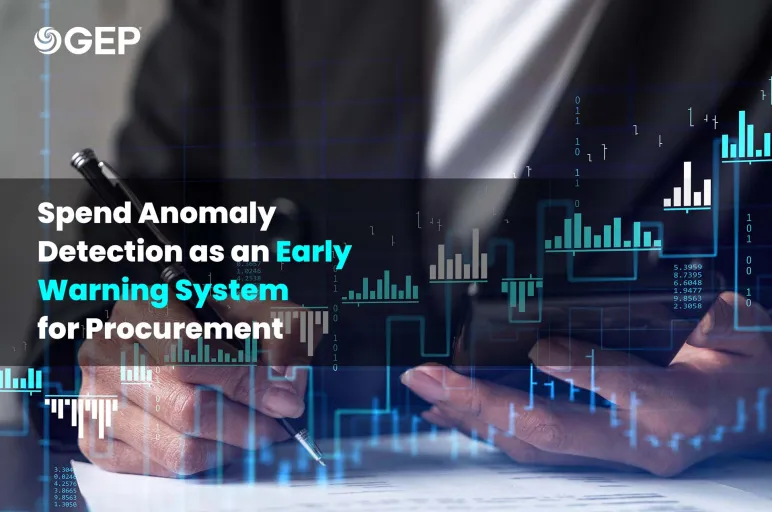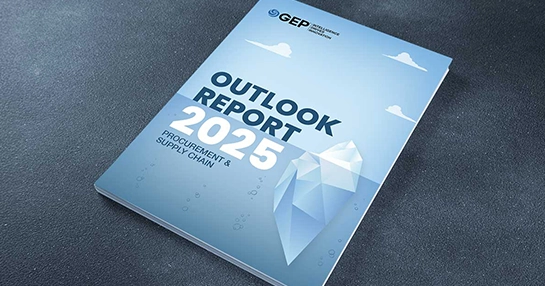
Real-Time Spend Anomaly Detection Gives Procurement Its Early Warning System
- Spend anomaly detection flags unusual spend behavior across categories and business units.
- It prevents fraud, duplicate payments, and off-contract purchases early.
- Spend anomaly detection builds stronger financial control and audit confidence.
October 30, 2025 | Spend Analysis 5 minutes read
Procurement teams manage thousands of transactions every week. Within that volume, small mistakes turn into big losses — duplicate invoices, off-contract buys, or unexplained cost spikes that slip through normal checks. Most companies discover them only during audits or year-end reconciliations, long after the money has moved. Recovering those funds takes months and often fails completely.
These errors may look harmless at first. A duplicate invoice gets paid. A buyer selects a non-contracted vendor for speed. A category manager approves an unusually high unit price without realizing it’s out of range. Each incident chips away at margins and trust. Finance questions procurement’s grip on controls, while auditors chase patterns manually.
Procurement spends more time explaining why things went wrong than preventing them. Traditional reviews, spreadsheets, or rules-based reports spot only what looks suspicious on the surface. They don’t see across categories or business units. And when the data lives in different systems, inconsistencies hide the real problem: the lack of a unified view of how money moves through the business.
Why Traditional Tools Can’t See the Whole Picture
Standard analytics tools were built for reporting, not vigilance. They summarize what happened — top categories, top suppliers, spend by region — but they don’t question why it happened or whether it should have. If the same supplier is paid twice under slightly different reference numbers, those systems treat them as separate, valid transactions.
Rules-based systems try to fill the gap with hard limits: “flag anything above 10% variance” or “raise alerts for all payments above $50,000.” These catch the easy cases but miss the subtle ones — the patterns that vary by season, region, or product line.
A spike in packaging costs could be normal before a product launch but unusual mid-quarter. A sudden jump in consulting spend might reflect a merger project, not waste. Rules can’t tell the difference. They generate noise, not insight.
AI tools promised improvement but often disappoint. Off-the-shelf models built on generic datasets don’t learn how each business behaves. They flag too many false positives and still depend on fragmented data. As GEP and NC State University research shows, data integration and quality remain the biggest barriers to using AI effectively in procurement and supply chain operations.
Without a shared data foundation across procurement, finance, and supply chain, even advanced analytics deliver partial truth. That’s why procurement still finds itself reacting instead of preventing — working backwards from audit findings instead of forwards from early warning signals.
Ready for Procurement Success? GEP Has the Solution
Transform your business with our AI-powered procurement software and services
When Spending Patterns Tell Their Own Story
Real spend behavior follows a rhythm. Some categories spike seasonally. Others stay flat all year. Each supplier, plant, and business unit has its own signature pattern. The key to finding anomalies isn’t adding more rules — it’s learning that rhythm.
Spend anomaly detection focuses on patterns, not thresholds. It studies years of transactions and identifies what “normal” looks like for every segment of spend. Then it spots anything that breaks the pattern — an unusual price, an unapproved supplier, or a repeat invoice that shouldn’t exist.
For example, a large manufacturing firm buys the same raw material from three suppliers every month. The volumes vary within a known range. When a fourth supplier appears in the system with a sudden high-value invoice, the model notices immediately. The team checks and discovers that the new supplier was created by mistake, and the invoice was a duplicate of an existing one. The correction happens before payment, not after.
In another case, a business unit’s travel expenses climb by 25% compared to the same quarter last year. The model flags it, not because the amount itself is high but because it deviates from past behavior. Procurement investigates and finds that several employees booked outside the approved travel system. Policy compliance improves without waiting for the annual audit.
The goal isn’t to stop spending but to understand it. Over time, the model learns to distinguish genuine changes — like a production ramp-up — from anomalies that need attention. That’s how anomaly detection becomes an everyday control, not just a technical feature.
How Real-Time Detection Changes Procurement’s Workload
Once anomalies are visible as they happen, procurement shifts from post-event review to live monitoring. Finance and category teams receive alerts within hours instead of weeks. They can pause questionable payments, validate pricing, or confirm supplier legitimacy before the transaction is finalized.
The benefit isn’t just catching fraud. It’s cutting the cost of inefficiency. Research from Gartner indicates that organizations using AI-driven spend monitoring reduce compliance violations by roughly 30% and lower recovery costs by half. Instead of tracing errors manually, teams focus on exceptions that matter.
Auditors benefit too. Instead of random sampling, they analyze the risk clusters generated by anomaly detection — the groups of transactions with similar warning signs. That makes audits faster and more focused, reducing time spent reconciling evidence.
Suppliers see the effect in clearer payment cycles. Duplicate invoices or data mismatches are caught early, avoiding disputes and delays. The overall relationship improves when issues are handled quickly instead of through lengthy post-payment investigations.
Procurement Software with Built-In Intelligence Closes the Loop
Detecting anomalies is only useful if teams can act on them. Procurement software with built-in intelligence makes that connection. When an anomaly appears, the system checks the transaction against contracts, purchase orders, and approval chains. If it finds a legitimate reason, the alert closes automatically. If not, it routes the case to the right stakeholder with all supporting details.
Each decision — whether the anomaly is valid or false — feeds back into the model. Over time, the system becomes more accurate and tailored to the organization’s real-world behavior. That learning cycle cuts noise and strengthens confidence in the results.
Explore 101 AI Use Cases
Real-world use cases that show how AI is transforming every stage of procurement
The Payoff is Clear
GEP’s analysis shows that companies using automated anomaly detection reduce budget leakage by up to 25% and speed up audit resolution by nearly 40%. Those are tangible gains — not theoretical benefits from analytics but measurable results from operational readiness.
Spend anomaly detection doesn’t replace control processes. It strengthens them. It gives procurement a live feed of how the organization spends money and whether those patterns make sense.
Instead of discovering problems months later, teams see them the same day. They can fix errors, stop fraud, and maintain clean records — all without slowing down business.
That’s how procurement finally earns its early warning system — one that watches every transaction with precision, learns from every correction, and protects every dollar.



